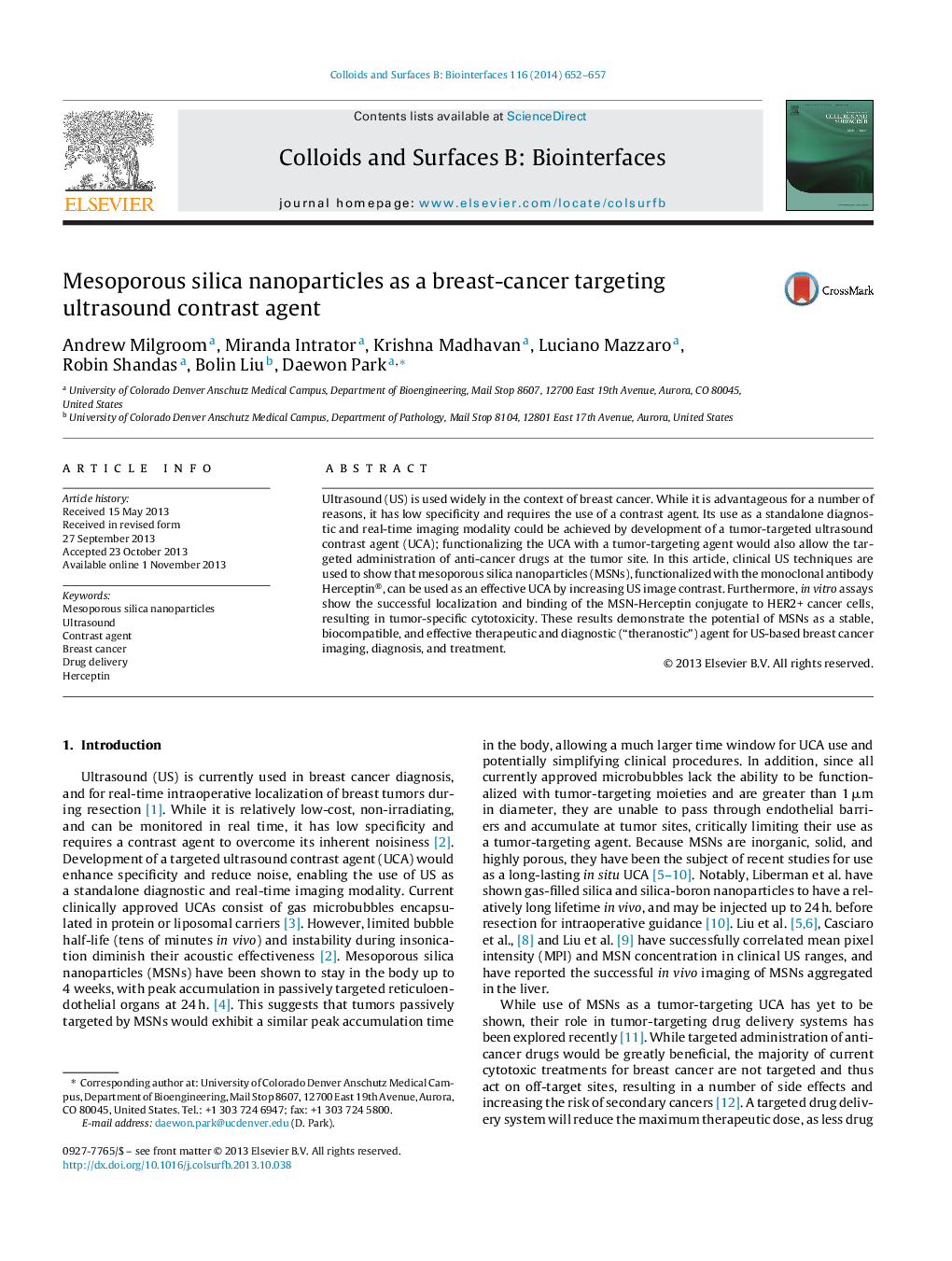| Article ID | Journal | Published Year | Pages | File Type |
|---|---|---|---|---|
| 6983498 | Colloids and Surfaces B: Biointerfaces | 2014 | 6 Pages |
Abstract
Ultrasound (US) is used widely in the context of breast cancer. While it is advantageous for a number of reasons, it has low specificity and requires the use of a contrast agent. Its use as a standalone diagnostic and real-time imaging modality could be achieved by development of a tumor-targeted ultrasound contrast agent (UCA); functionalizing the UCA with a tumor-targeting agent would also allow the targeted administration of anti-cancer drugs at the tumor site. In this article, clinical US techniques are used to show that mesoporous silica nanoparticles (MSNs), functionalized with the monoclonal antibody Herceptin®, can be used as an effective UCA by increasing US image contrast. Furthermore, in vitro assays show the successful localization and binding of the MSN-Herceptin conjugate to HER2+ cancer cells, resulting in tumor-specific cytotoxicity. These results demonstrate the potential of MSNs as a stable, biocompatible, and effective therapeutic and diagnostic (“theranostic”) agent for US-based breast cancer imaging, diagnosis, and treatment.
Related Topics
Physical Sciences and Engineering
Chemical Engineering
Colloid and Surface Chemistry
Authors
Andrew Milgroom, Miranda Intrator, Krishna Madhavan, Luciano Mazzaro, Robin Shandas, Bolin Liu, Daewon Park,
